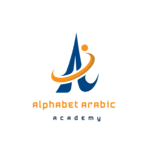Easy, simple and interactive courses to Learn Arabic for Kids through international curricula. Education through games, stories and videos. You can register with us directly to book a course for your child at the appropriate time for the school schedule. Very competitive prices. Work 24/7. Don’t miss the opportunity to make your child a native speaker of the Arabic language. contact us

Arabic is one of the most beautiful and rich languages in the world, and introducing it to children at a young age can provide a strong foundation for lifelong learning. Whether you’re a parent searching for engaging ways to teach Arabic or a teacher looking for interactive strategies, this guide will help you explore the most effective and enjoyable methods.
Introducing Arabic to Kids
Starting early makes a big difference when it comes to language learning. A child’s brain is highly adaptable, making it easier for them to grasp new sounds, words, and grammar structures. By creating a fun and immersive environment, kids can learn Arabic naturally without feeling overwhelmed.
Engaging Arabic Learning Methods
Children thrive when learning is interactive and playful. Hands-on activities, colorful books, engaging videos, and printable worksheets make learning Arabic exciting. The key is to use multiple resources that cater to different learning styles, keeping kids motivated and curious.

Interactive Arabic Lessons
Interactive lessons, whether online or in person, help children develop essential language skills. Platforms like Preply, Duolingo, and AlifBee offer structured lessons tailored to different levels, from beginner to advanced. Combining reading, writing, speaking, and listening exercises ensures a well-rounded learning experience.
Arabic Fun Learning Activities
Adding an element of fun to Arabic lessons makes learning effortless. Activities like Arabic letter tracing, flashcards, and phonics games help build a child’s foundation in a playful way. Using educational materials that focus on basic vocabulary, grammar, and pronunciation enhances retention.
Creative Arabic Language Games
Games are a fantastic way to reinforce language skills! Arabic alphabet puzzles, memory games, and word-matching challenges make learning enjoyable. Apps like KalamKids and Asq provide game-based learning, while printable worksheets offer hands-on practice for children of all ages.

Using Technology for Arabic Learning
Technology plays a major part in learning a new language. Online courses, YouTube videos, and immersive apps provide kids with the opportunity to learn Arabic in an interactive way. Platforms like r/Learn Arabic, Arabic Academy, and Alyasameen offer structured programs designed for different learning levels.
Arabic Songs and Rhymes for Kids
Music proves to be a highly effective tool for learning a language. Arabic songs help children pick up pronunciation, vocabulary, and rhythm effortlessly. Many educational programs incorporate fun rhymes, Quranic recitations, and engaging nursery songs to make learning enjoyable.
Arabic Storytelling Sessions
Storytelling is a powerful way to introduce new words and sentence structures. Reading Arabic books, listening to audiobooks on Audible, or watching storytelling videos helps children improve their comprehension skills. Story-based learning keeps kids engaged while strengthening their vocabulary.
Arabic Cultural Explorations
Understanding Arabic culture deepens a child’s appreciation for the language. Exploring Arabic traditions, calligraphy, and Islamic history makes learning more meaningful. Parents can introduce cultural elements through books, activities, and discussions to spark curiosity.
Arabic Language Learning Apps
There are numerous apps that make learning Arabic convenient and fun. Duolingo, AlifBee, and interactive Quran learning apps offer structured lessons for kids. These apps provide a wide range of exercises, from basic alphabet practice to grammar lessons, making Arabic learning accessible anytime, anywhere.
Motivating Kids and youngers to Learn Arabic online
Encouraging consistency is key! Celebrate small achievements, set goals, and create a supportive learning environment. Engaging with native Arabic teachers, joining online classes, and using gamified learning tools helps maintain enthusiasm.
Arabic Learning Progress Tracking
Monitoring advancement helps children stay encouraged. Parents and teachers can use rating systems, worksheets, and level-based learning to measure improvement. Many online platforms provide progress reports, making it easy to assess a child’s development in Arabic.
Learn Arabic Online
Online learning platforms provide flexible and interactive ways to teach Arabic to children. Whether through structured lessons, engaging games, or Quranic studies, kids can develop their language skills at their own pace.
Learn Arabic for Kids PDF
Printable worksheets and PDFs offer valuable practice. These resources include alphabet tracing, grammar exercises, and simple vocabulary lessons, making them excellent for both beginners and advanced learners.
Learn Arabic for Beginners
Starting with the fundamentals is essential for newcomers. Learning the Arabic alphabet, common words, and essential phrases builds a strong foundation for language development.
FAQs
How can I make learning Arabic enjoyable for kids?
Use interactive games, fun songs, and engaging stories. Incorporating apps, videos, and hands-on activities makes learning Arabic fun and effective.
Are there any recommended Arabic learning apps for children?
Yes! Duolingo, AlifBee, and Preply are great apps for kids learning Arabic. These platforms offer structured lessons with interactive exercises.
What are fun activities to engage kids in learning Arabic?
Some fun activities include Arabic letter puzzles, flashcards, phonics games, and storytelling sessions. Using printable worksheets and educational videos also helps.
How can storytelling help in teaching Arabic to kids?
Storytelling introduces new vocabulary and sentence structures in a natural way. Reading Arabic books, listening to audiobooks, and watching story-based videos enhances language learning.
Why is it important for kids to learn Arabic at a young age?
Young children absorb languages more easily. Learning Arabic early helps with better pronunciation, grammar retention, and cultural appreciation.
Want to give your child the best start in learning Arabic? Visit Alphabet Arabic Academy for affordable and engaging Arabic lessons! Follow us on our social media channels for more learning resources.


